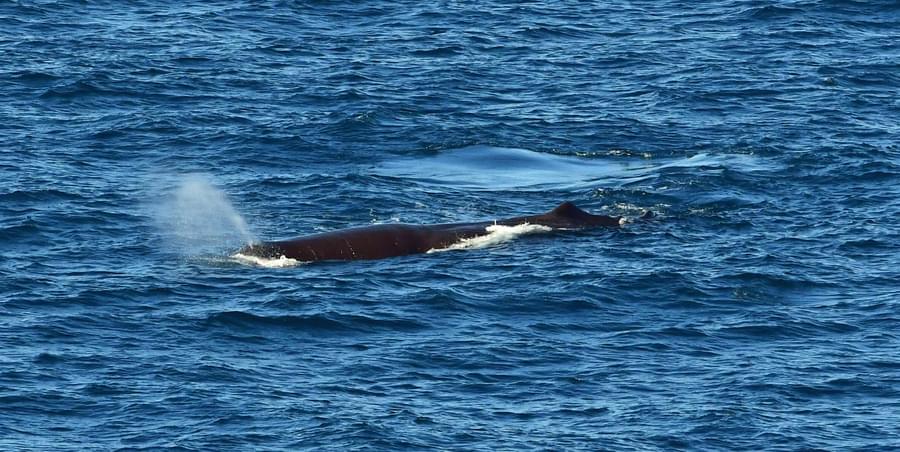An ORCA team was on board Saga Spirit of Discovery as it skirted the Arctic spotting humpbacks, baleen whales and carousel feeding orcas. Read Wildlife Officer Chrissy’s blog here.
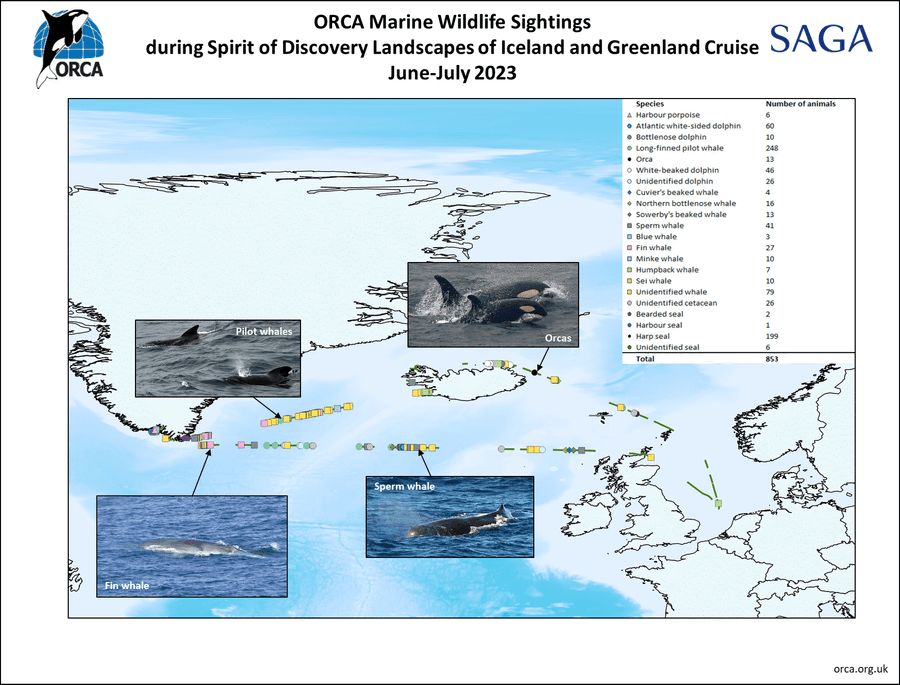
Hello, Wildlife Officer Chrissy here to share just a little of the incredible journey myself and the team of volunteer Marine Mammal Surveyors had whilst exploring the Arctic in search of whales, dolphins and porpoises. On the 28th of June, I joined fellow ORCA Marine Mammal Surveyors Becca, Bill and Stuart, on the Saga Spirit of Discovery travelling from Tilbury up to Scotland and from there to Iceland and Greenland. We were all thrilled to have the opportunity to survey this route, as one of the trained teams who join specially selected Saga cruises to collect data as well as inspiring and informing guests about the incredible marine wildlife which can be seen en route.

The waters around Scotland, Iceland and Greenland, are distinctly different places. But particularly during the summer they share a common identity in that they become amazing hotspots for many marine mammal species. The nutrient rich waters brought to the UK by the Gulf Stream and North Atlantic current, create the perfect recipe for a huge diversity of marine life, including transient orca, who we always hope to see. The Northern Fjords of Iceland are the most important juvenile grounds for herring where, in the summer months at the bottom of the fjords, herring aged between one and two years old are always present. Humpback whales make the incredible journey migrating from the Caribbean up to Iceland so they can feed on these herring. Greenland has always been a remote yet fascinating place for me, where life survives in synchronicity with the freezing and melting of the sea ice. When the sea ice melts during the longer days of summer, this allows the sea ice algae to be released and the phytoplankton to bloom. Combined, they make up the foundations for all life in the Arctic.
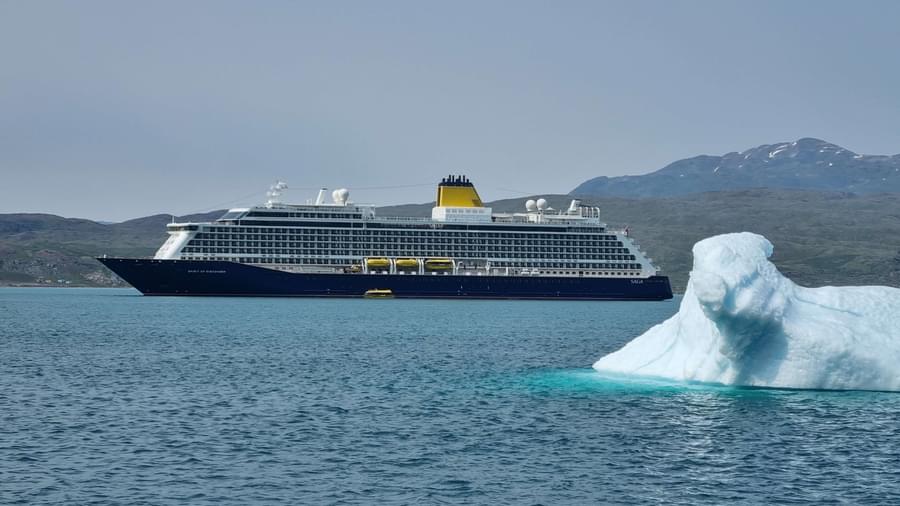
It was especially exciting for us, because the route meant we had nine days at sea, travelling across multiple oceans and incredible seascapes. This included crossing deep water canyons, tectonic plates and the vast expanse of the Atlantic Ocean, allowing for a variety of different species to be spotted, but unfortunately, sightings can never be guaranteed. Although marine mammals must all come to the surface to breathe, there are also several other elements which need to work in our favour to be able to spot them. The sea-state, weather, and being able to see a distinguishing feature of the species so that we can positively identify them are always factors, but thankfully we were in luck. With incredible sunshine and calm seas for most of the cruise, and joined by enthusiastic guests on board helping us to spot the wildlife, we saw 15 different species and had some amazing encounters.
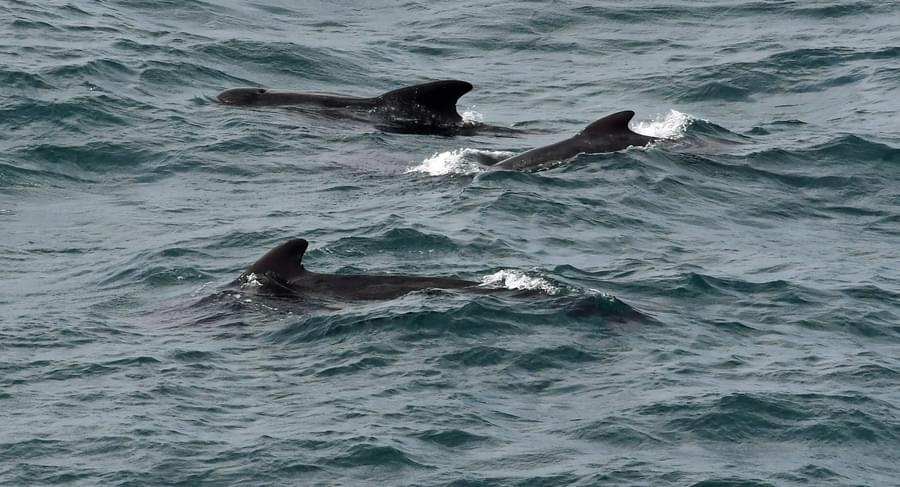
With white-beaked dolphins bouncing across the ocean, and orca carousel feeding whilst teaching their young calf as we headed up to Iceland, the variety of wildlife was astonishing. We also had humpbacks greet us at every port in Greenland and a symphony of large baleen whales blowing along the horizon as we left. One of my favourite sightings was getting to witness the sea erupt with a huge mixed pod of long-finned pilot whales and Atlantic white-sided dolphins racing across the Atlantic.
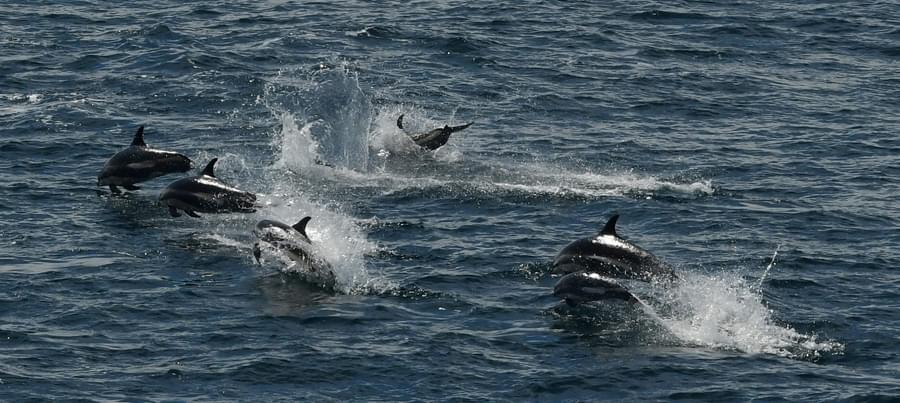
For the team, the sperm whales amazed us the most, as we ended up seeing them for most of our journey, logging and tail fluking as they dived to feed in the underwater trenches. It was wonderful for us to be able to share these sightings with guests and crew onboard. Without this opportunity, partnering with Saga to use their vessels as a platform of opportunity to survey from, we couldn’t do the vital research which helps to protect marine mammals and their habitats.
